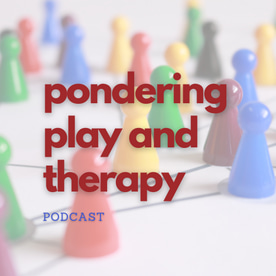Navigating the Complex World of Child and Adolescent Mental Health Services (CAMHS)
In a recent episode of "Pondering Play and Therapy," Philippa sat down with Claire, a clinical service lead for CAMHS, to delve deep into the intricacies of mental health care for children and adolescents. With a career journey that began in a nursing home, Claire's path eventually led her to work with young people facing severe mental health challenges. Her insights shed light on the diversity of services and therapies, including the ever-crucial Cognitive Behavioural Therapy (CBT).
Philippa and Claire
5/31/20252 min read


Claire's Journey to CAMHs
Claire started her career in care at the young age of 15, working part-time in a nursing home. This experience laid the foundation for her future in mental health services. Despite facing malpractice and professional challenges in her early career, Claire was drawn to helping those who can't support themselves, which eventually guided her to child and adolescent mental health.
From Inpatients to Community
Claire shared her experience transitioning from working in inpatient facilities, which cater to the most severe cases, to community settings. Originally beginning in tier four services, which involve children requiring hospitalisation under the Mental Health Act 1983 due to severe mental health disorders, Claire later moved to tier three. Here, she focused on supporting young people in the community, addressing issues before they escalate to needing hospital care.
Clarifying Mental Health Difficulties
Mental health difficulties can manifest in a variety of ways in young people. From depression and PTSD to social anxiety and OCD, each disorder presents unique challenges. Claire emphasised that mental health difficulties in CAMHS reflect the significant impact on a young person's daily life, such as disengagement from school or social interactions and heightened risks to self-care and safety.
The Role of CBT in CAMHS
Philippa and Claire discussed Cognitive Behavioural Therapy (CBT), a cornerstone treatment in CAMHS due to its adaptability and evidence-based nature. CBT helps young people identify and change negative thought patterns, with Claire taking special care to adapt her approach to suit individual needs. The ultimate goal is to empower young people with the tools to manage their mental health challenges effectively.
Introducing Play into Therapy
An interesting aspect of CAMHS, as Claire points out, is the integration of play within therapies like CBT. Play may involve visualising problems, role-playing, and using metaphors to help young people understand and address their challenges. It serves not only to make therapy less intimidating but also to foster a strong therapeutic relationship.
Accessing Support
For parents and carers seeking support, Claire suggests first engaging with mental health services available in schools, which might include mental health in schools’ teams. These teams provide early interventions that can often suffice in managing mild to moderate concerns before requiring CAMHS. Additionally, CAMHS accepts self-referrals, offering guidance and directing families to appropriate services when needed.
Becoming a CBT Therapist
For clinicians aspiring to train in CBT, Claire advises gaining experience working with young people first. The training involves intensive, year-long courses through the Improving Access to Psychological Therapies (IAPT) initiative. The rigorous combination of theoretical learning and real-world practice ensures readiness to deliver effective evidence-based interventions.
Conclusion
The conversation with Claire offers valuable insights into the layered world of child and adolescent mental health. Through passion and dedication, professionals like Claire continue to advance the field, providing essential support and interventions to young people at risk. For families, understanding and accessing the right level of support can markedly change the trajectory of a young person's mental health journey.
This intricate balance between therapy, care, and play ensures that each child and family receives tailored support, meeting both immediate needs and long-term goals in their mental health journey.
